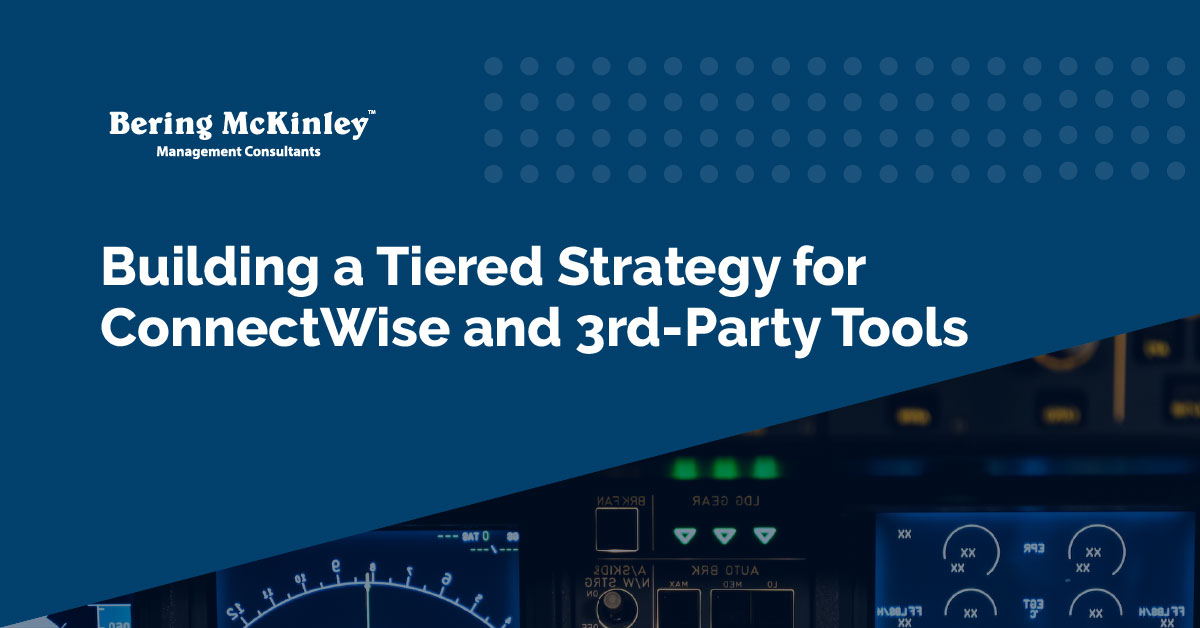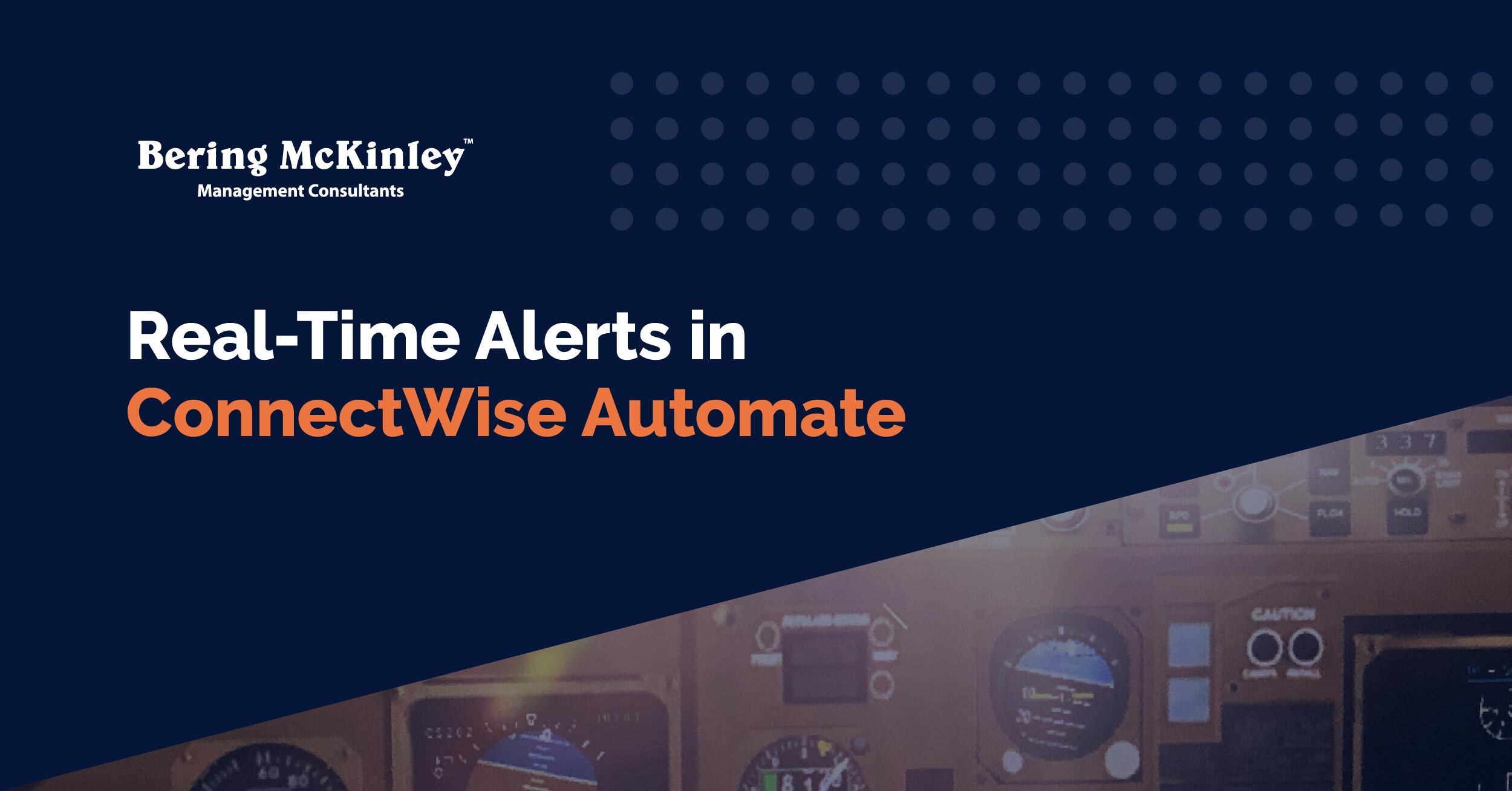Build a Client Portal That Doesn’t Suck: Live Chat, Ticketing & More in ConnectWise
Trying to get ConnectWise to finally work with you instead of against you? You’re not alone. For many MSPs, it’s the digital equivalent of a Swiss...
4 min read
 Josh Peterson
:
Aug 25, 2025 2:00:00 PM
Josh Peterson
:
Aug 25, 2025 2:00:00 PM

Building out integrations for ConnectWise and third-party tools probably wasn’t part of your MSP dream. But here you are, reading this post, wishing the documentation was just a little less technical and a lot more "human." Maybe you’ve just wrapped up the initial setup of your ConnectWise environment…if not, take a look at our blog on Your First 100 Days with ConnectWise: A Complete Setup Roadmap for a survival kit. Now, you want to actually make ConnectWise work for you without breaking your brain or burning through billable hours.
This guide brings it down to earth. Let's walk through how you can approach integration with a tiered strategy, making it simple, scalable, and smart—even if you’re not a full-time systems engineer or someone who dreams in APIs.
Here’s what you’ll learn:
Building out integrations isn’t just flipping a switch, plugging in, and moving on. A tiered approach means layering your integrations by importance and complexity, so you don’t end up with a Rube Goldberg machine quietly plotting against your team in the background.
Why tier your approach?
Think of this as Marie Kondo for your MSP tech stack, but instead of sparking joy, you’re sparking efficiency and profitability.
Before we jump in, here’s the landscape: ConnectWise is built to scale with you. From low-code workflows to full-blown API integrations, it supports everything from “just works” convenience to custom automation wizardry.
Key options MSPs work with:
But just because you can connect something, doesn’t mean you should (at least, not all at once).
Before getting technical, plot your integration wish list. Where are your bottlenecks or error-prone manual processes? What eats away at your day? Are there compliance tasks that must be rock-solid, or customer-facing workflows where missteps cost money or reputation?
Ask yourself
Now choose your top three integrations. Yup, just three to start. Focus keeps things manageable and lessons learned from one can inform the rest.
These are plug-and-play or near plug-and-play integrations available in the ConnectWise Marketplace or certified via the Invent Program.
Examples:
Why start here?
You move up the ladder into integrations that require configuration, mapping fields, and maybe a little help from a tool like Zapier or an in-between platform like QXchange.
Examples:
Why here?
This is advanced territory. Maybe your company has some unique workflow, or there’s a feature gap. Direct API scripts, webhooks, or webhook-to-API bridges live here. You might team up with a specialist or consultant at this stage.
Why go custom?
Warning: Don’t start here unless you truly must. "Because I can" is not a valid tier three strategy.
Once you know your priorities and tiers, plot a course of action. Call it a roadmap, a blueprint, a track—call it whatever you want—just make one. You don't have to lock yourself in, but a plan keeps your stack from looking like your sock drawer after laundry day.
Sample roadmap:
Tip: Track what doesn’t work as much as what does. Integration-fails make for great “what not to do” stories at the next MSP meetup.
More isn’t always better. Every new link in the chain is a new point of failure.
Integrations need ongoing care. Document the setup, logic, and authentication details, and map out “what ifs” for outages or auth changes.
Always test with actual data in a sandbox, not live environments.
Use certified integrations whenever possible. The Invent Program exists for a reason; integrations like HYAS Infosec through Invent offer real peace of mind with security reviews.
Someone on your team needs to own each integration—document who, what, and where.
You’re not alone. Don’t suffer in silence or try to build Rome in a day. Engage with ConnectWise’s developer network, user forums, and specialists like those at Bering McKinley. Read up on “Your First 100 Days with ConnectWise” for setup lessons, and check the ConnectWise blog for real-world integration case studies from MSPs who’ve been there and survived.
Implementing a tiered integration strategy with ConnectWise isn’t just about surviving IT vendor roulette. It’s about building a system where people and platforms work with each other, not against. Start with the basics, celebrate each small win, and don’t be afraid to ask for help.
Need personalized guidance? The team at Bering McKinley brings decades of ConnectWise expertise. We’ll map your priorities, help you avoid common pitfalls, and keep your integrations as simple or as customizable as you want.
Take action now and reach out to Bering McKinley for a free consultation. With a solid, tiered integration roadmap, you transform ConnectWise from "just another tool" into the operational backbone your MSP actually enjoys using.

Trying to get ConnectWise to finally work with you instead of against you? You’re not alone. For many MSPs, it’s the digital equivalent of a Swiss...

If you work in IT or manage an MSP (Managed Service Provider), you're no stranger to ConnectWise Automate. This powerful tool helps streamline IT...
%20.jpg)
Ever feel like learning ConnectWise ticketing is like trying to play Tetris with sticky notes, vague instructions, and random tickets your coworker...